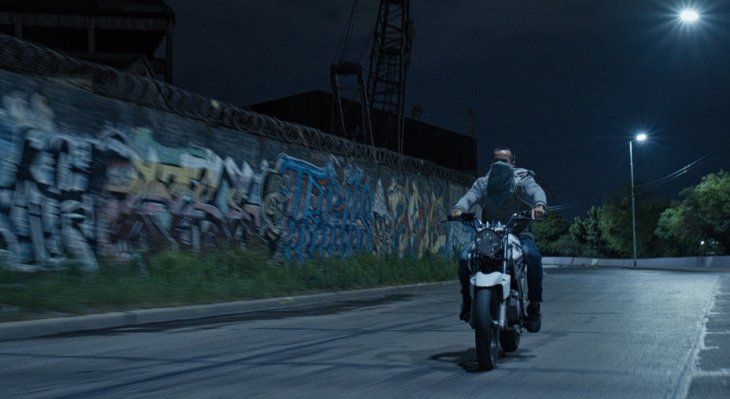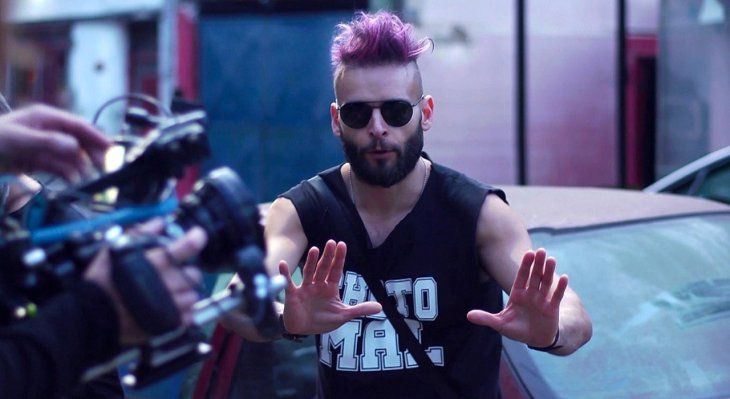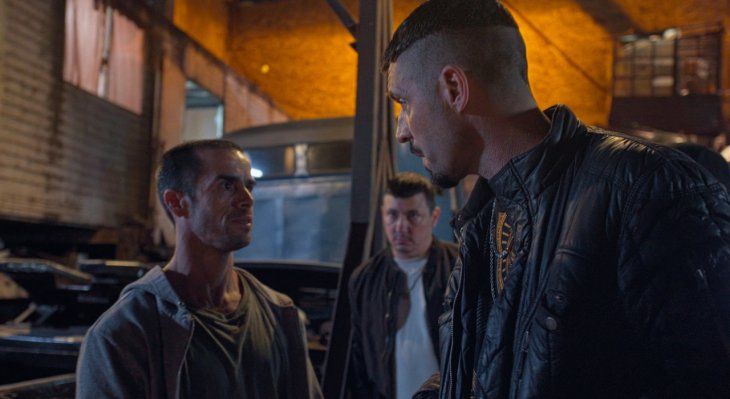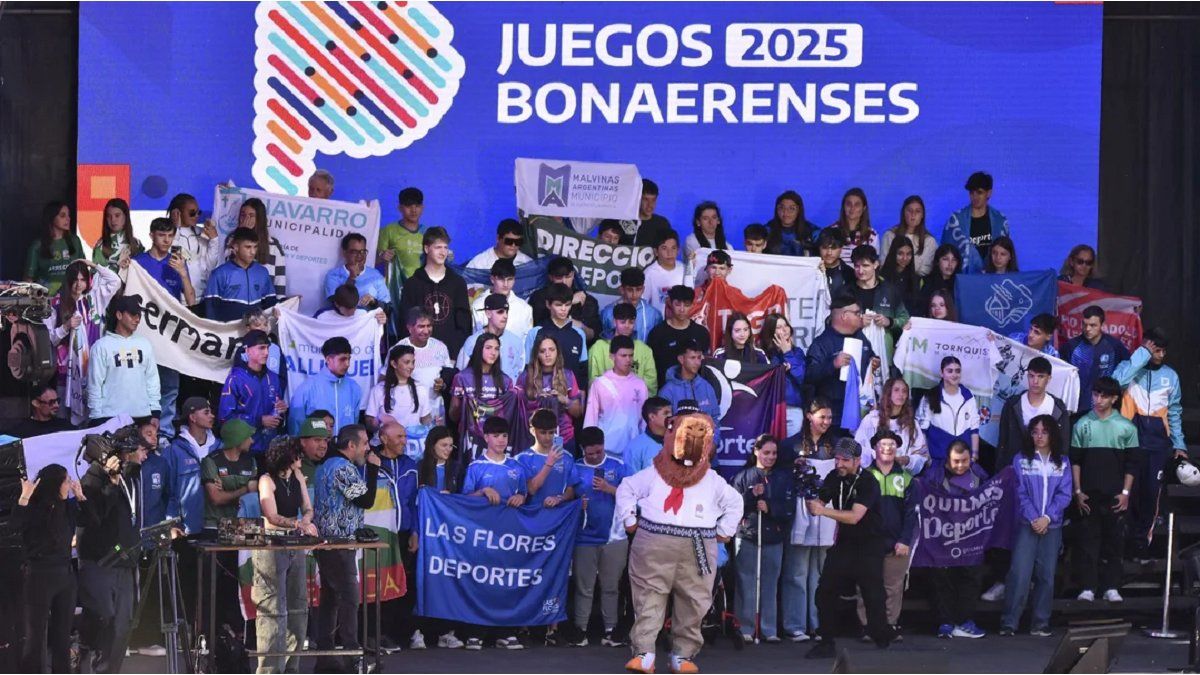After his acclaimed passage through the Buenos Aires International Festival of Independent Film (BAFICI) and to receive awards at different international festivals, “Gatillero” arrived at theaters. The film directed by Cris Tapia Marchiori not only steals all eyes by his plot: A confrontation between drug traffickers and neighbors of Maciel Island, but because it is also filmed in sequence plane.
“Gatillero” revolves around Pablo “El Galgo” (Sergio Podeley), who after leaving prison returns to his neighborhood, where he generates a stir with an improvised robbery. As a result, It is reunited with two excollegas that encourage him to exercise his trade again: be a trigger. However, this also means responding to the orders of “the godmother” (Julieta Diaz), the neighborhood leader. “The greyhound” accepts, has nothing to lose, or yes? However, As soon as he bows his head and shooting shots, chaos unleashes. His neighborhood betrays him. His only way out is to hide in the shadows and distrust anyone who crosses him.
The film portrays the claim. After having been imprisoned and being betrayed by his own people, “El Galgo” has the opportunity to do different things. In that moral dilemma, he meets the residents of Isla Maciel and understands what entails being on the other side. Without romantizing or stigmatizing, Cris Tapia Marchiori manages to reflect the different nuances of the same neighborhood.
The sequence plane stars in “Gatillero”
The second opportunities do not guarantee that the neighborhood give you a break. “The greyhound” is delivered to his instinct, jumps the walls of Maciel Island and dodges shots. During the 80 minutes of “Gatillero” there are no pauses. This story is in constant movement, not only because of the tense climate it handles but because it is also filmed in a sequence plane. The narrative element, which months ago was rage with the series “Adolescence”, today becomes the main protagonist of this film.
“In ‘Gatillero’ I wanted to explore the situation of Narcos Vs. Neighbors, already narrative level I wanted to do something that presents a challenge and that seems different,” explains the director. However, traditional recipes are broken here, since the desire to film in a single plane was first born and then the story: “Based on wanting to narrate something in a sequence plane, with Clara Ambrosoni we wrote the script.”
Gatillero (1) .png
“Gatillero”, the film filmed in plane sequence that challenges Argentine cinema.
Journalist: Filming in plane sequence is a challenge, did you have previous experience or did you have to learn how to do it from scratch?
Cris Tapia Marchiori: I considered the worst person to make a sequence plane. I had done one in my prima opera that lasted a minute and when I edited it, it seemed so bad that we took it out. So, I started studying this concept of action in real time that I found interesting because the sequence plane used as a nerve more than a gear that is not capricious, can have a very effective result. “Gatillero” before having a script, he had a calendar about what I understood what had to do to carry out that film. It was nice because it was a challenge. Film a movie in days It means learning new ways to make movies, but also want to unlearn what we already knew.
Q: How was this process of “learning and unlearning”?
CTM: In the cinema we do everything quite difficult, where it is said “here should come a crane, a harness or a rope to raise the camera,” I said “let’s put a ladder or a beer drawer” and stopped in the beer drawer and jumped. Or when we went up to the cars, there were times that we said, “Who has the camera?”, And I said “that the actor grabs it, that he has a little little little, I get on the back door, I grab it and keep filming it”. Those resolutions that give you informality were seen in many areas because they took us a lot of problems. There were things we couldn’t fight with then we had to hug them. I asked that the words “impossible” and “dangerous” are not used. The team was so respectful of my madness that they did not say “this is dangerous or impossible,” they thought, but they didn’t say it. I am a chabon who lived in Parchment, who studied script because he had no money to study film. I lived on the street. He lived without light or food. It is very difficult for you to believe that something can be impossible because for me some return we can always find it and this was what made “gatillero” advance.
Gatillero .png

After his acclaimed passage through the Bafici, “Gatillero” arrives at the country’s rooms.
Q: And “Gatillero” could also advance thanks to a team that trusted you.
CTM: “Gatillero” is a project in which everyone jumped into parachute without seeing it, trusting that I was going to go and activate the parachute. Most of the time nobody knew where the thing was going. While there was a model or explained everything, There were more than once where all the people who worked did not understand what was happening, but they still jumped or back me depending on how they asked.
Q: “Gatillero” is a story of second opportunities. Not only because without having studied cinema and considering you “the worst person” to make a sequence plan you could make this film, but because the story is inspired by an acquaintance of yours who killed the police. You gave a second chance to someone who did not have it.
CTM: When you write a movie, choose a theme to comment. It is impossible for you to make a movie and not think about what you are doing. You want or not, have your armed opinion at a conscious or unconscious level. You may look for her while doing it, but there is something about what one wants to reflect and possibly that is reflected in the movie. In “Gatillero” I give life to someone I met and killed the police. I was very clear that I wanted to talk about the second opportunities, of a person from whom nobody expects anything and suddenly may or may not do something to claim. Or the people trying to reintegrate after leaving prison. I wanted to bring to the table what happens with the neighbors who live with the drug traffickers. When I am an author, I like that the characters who speak and think are almost all marginal. There is something with that universe that seduces me, I like it and that I have traveled in my personal life. I was linked to many situations to which I relate to some characters and write them because I met them. Situations that today do not make me proud who would not link me again. However, they are in my past, at some point I did understand violence as an instrument. Today I try to participate in violent situations through my characters. That is why I am a lot to talk about these universes. I don’t have an NGO, so I make movies and talk about it. It is what I can do because it is what I know and what is born to me.
Cris Tapia Marchiori.png

Cris Tapia Marchiori premieres “Gatillero”, his second film.
Q: This story in real time that went through different festivals, including Bafici, finally reached theaters. What is it to be released in times of uncertainty?
CTM: We are in the face of a premiere in an Argentina that has almost no national premieresthat has no films, that almost nothing is being filmed. My producer Pablo Udenio told me that doing a premiere is almost as difficult as filming. Argentina is a country that has shown us that uncertainty is our current currency, so it is a scenario that I do not control. I can make a plane take off, I can make people follow me, I can make people invest money, but the premiere is a scenario that I do not control. Let’s see what happens on the other side.
Technical file
“Gatillero” (Argentina 2025). Address: Cris Tapia Marchiori. Script: Cris Tapia Marchiori and Clara Ambrosoni. Producers: Pablo Udenio and Enrico Udenio. Cast: Sergio Podeley, Julieta Díaz, Maite Lanata, Ramiro Blas, Mariano Torre, Matías Desiderio, Susana Varela, Gonzalo Gravano, Bianca Di Pasquale. Duration: 80 minutes.
Source: Ambito
I am an author and journalist who has worked in the entertainment industry for over a decade. I currently work as a news editor at a major news website, and my focus is on covering the latest trends in entertainment. I also write occasional pieces for other outlets, and have authored two books about the entertainment industry.




